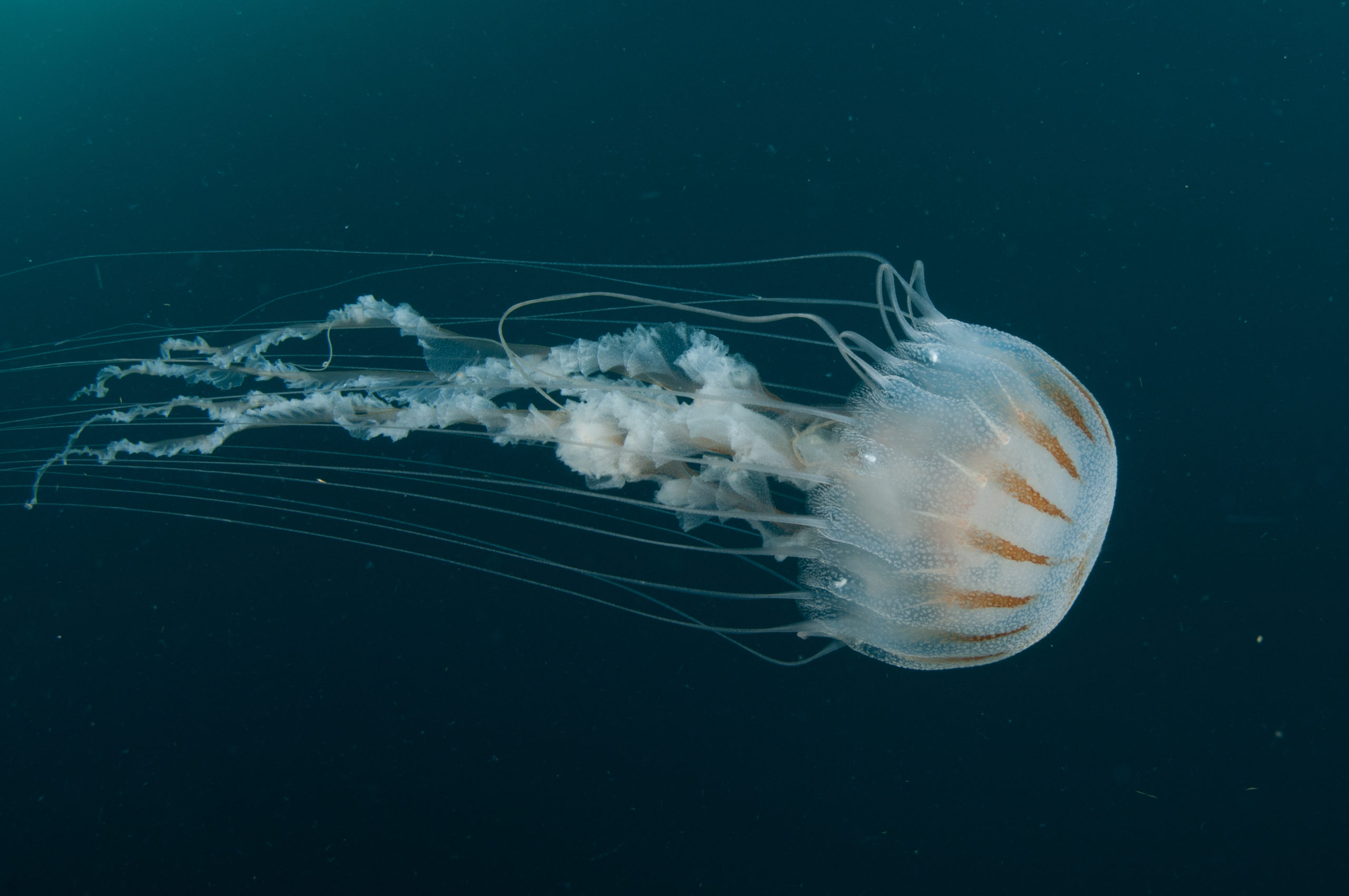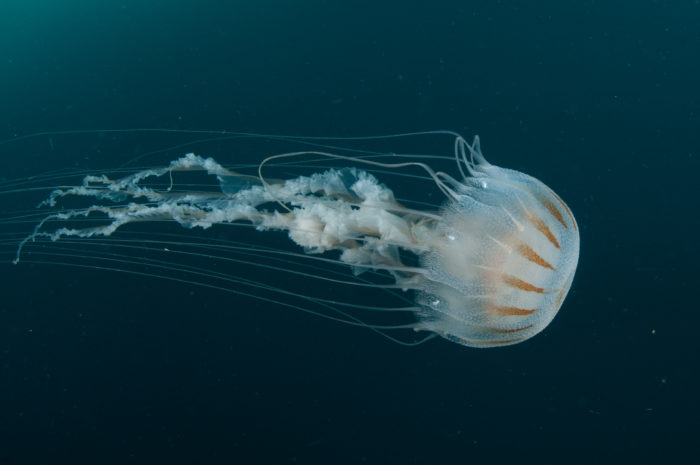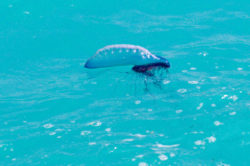
What’s the Difference? Jellyfish vs. Man o’ War
They have tentacles… they sting… and they’re avoided in the ocean. They’re basically the same, right? Despite being often mistaken as the same kind of animal, the jellyfish and Portuguese Man o’ War are actually quite different. Knowing what makes them unique might not seem like critical information but you never know when it might come in handy, whether on the beach or during your next trivia game! Learn more about their similarities and differences below:

East Coast Sea Nettle Jelly Photo Credit: GP Schmahl/NOAA
Jellyfish
Are part of a group of animals known as medusozoa
Have a complex life cycle that includes both asexual and sexual reproductive strategies
Adults (medusae) have a single gelatinous body
Actively propel themselves forward by rhythmically expanding and contracting their bells (but aren’t strong enough to resist the direction of most ocean currents)
Have stings that are generally painful but not lethal or harmful to humans
Portuguese Man o’ War
Are part of a group of animals known as siphonophores
Only use a sexual reproductive strategy called spawning
Look like a single animal but are actually a colony of four separate polyps that live together. The upper-most polyp is the gas filled bladder that sits at the water’s surface; the second polyp comprises the stinging tentacles covered in nematocysts, stinging cells; the third polyp provide the musculature in the tentacles that move food to the digestive system; and the fourth polyp provides the reproductive organs.
Do not have organs that allow them to actively propel themselves through the water, leaving them at the mercy of strong currents and winds
Have stings that are painful and harmful to humans, even if they have washed ashore and dried out
Both
Part of the phylum Cnidaria
Possess stinging tentacles used to stun their prey for capture with their feeding arms
Feed on plankton and smaller species of fish
Are eaten by loggerhead turtles, sharks, and large predatory fish
Now that you’ve become an expert on jellyfish and man o’ wars, take your knowledge to the world! Tweet what you learned and tag us at @marinesanctuary so we can see your responses!

